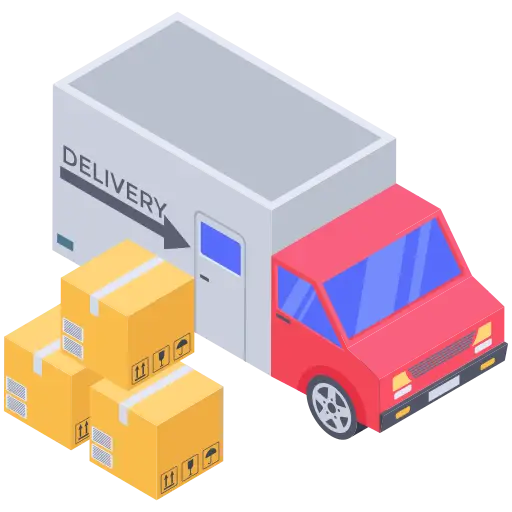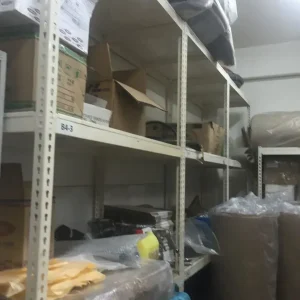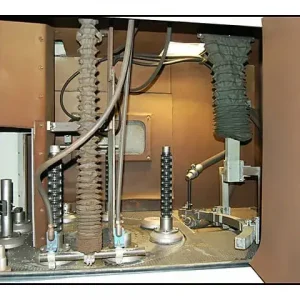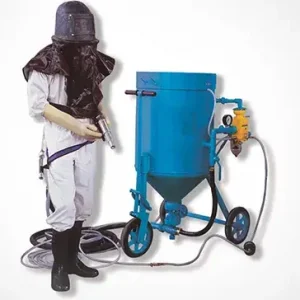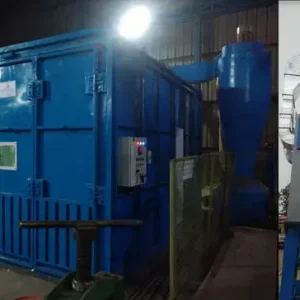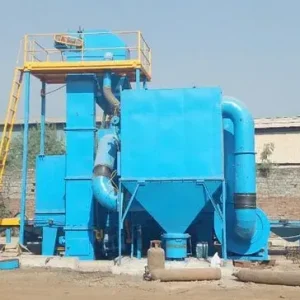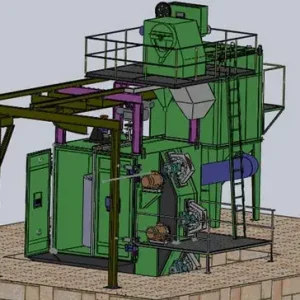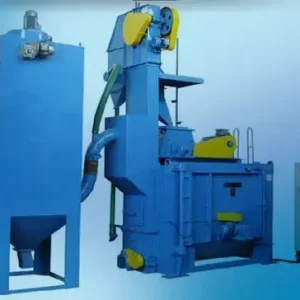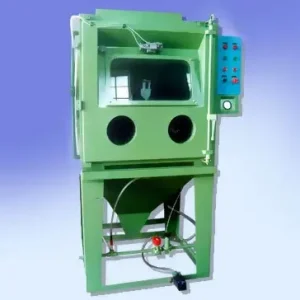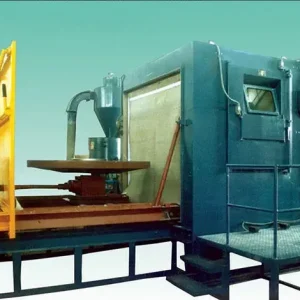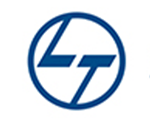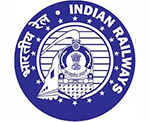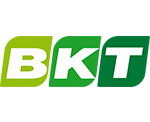By AeroWheel Surface Finishing
In industries like metal fabrication, automotive, railways, and foundries, surface cleanliness is critical. Whether it’s removing rust, scale, paint, or preparing metal for coating—shot blasting is a vital process. Among the various types of machines used, the table type shot blasting machine stands out for its simplicity, efficiency, and ability to handle large, flat, or heavy workpieces.
At AeroWheel Surface Finishing, we specialize in designing and manufacturing advanced table type shot blasting machines tailored to real-world industrial needs. In this blog, we’ll explain how this machine works—step by step—to help you understand its process, performance, and advantages.
What Is a Table Type Shot Blasting Machine?
A table type shot blasting machine features a rotating table inside a blast cabinet. The components to be cleaned are placed on this table, which rotates slowly while steel shots or grits are blasted onto the surface through high-speed turbines.
This machine is ideal for:
- Large and heavy parts
- Flat or cylindrical components
- Castings, gear housings, engine blocks, and fabricated structures
Step-by-Step Working Process
Let’s walk through the working of a table type shot blasting machine from start to finish.
Step 1: Loading the Component
The first step involves manually or mechanically loading the workpiece onto the rotating table.
- The table is usually made from heavy-duty steel with high load-bearing capacity.
- Components are arranged to expose the desired surface to the blast stream.
For very heavy parts, overhead cranes or forklifts can be used for safe placement.
Step 2: Closing the Blast Cabinet Door
Once the components are securely placed, the operator shuts the machine’s cabinet door.
- Safety interlocks ensure that the blasting process cannot begin until the door is fully closed.
- The blast chamber is lined with wear-resistant materials to withstand abrasive impact.
Step 3: Initiating the Blast Cycle
The operator starts the machine using the control panel.
- The table begins to rotate at a pre-set speed.
- Simultaneously, one or more blast wheels (turbines) start propelling steel shots or grits at high velocity.
The rotating motion ensures uniform exposure of the surface to the abrasive flow for consistent cleaning.
Step 4: Surface Cleaning by Abrasive Blasting
As the abrasive strikes the metal surface, it removes:
- Rust and scale
- Oxidation and corrosion
- Old paint, grease, and contaminants
- Flash and residues from casting or welding
Depending on the component type and level of cleaning required, the blasting cycle can last from a few minutes to longer durations.
Why You Should Choose a Trusted Indian Manufacturer for Sand Blasting Equipment
Affordable Portable Sand Blasting Machines for SMEs
How We Helped a Client Reduce Downtime with a New Shot Blasting Setup
Step 5: Separation and Recycling of Abrasive
After blasting:
- The used abrasive and debris fall to the bottom of the chamber.
- This mixture is collected and transferred to a separator unit through a screw conveyor or elevator system.
- The separator filters out dust, broken media, and contaminants.
- Clean abrasive is recycled and reused in the next cycle, reducing waste and cost.
A connected dust collector system ensures that the air inside the chamber is clean and breathable, minimizing environmental hazards.
Step 6: Stopping the Machine and Unloading
Once the cycle ends:
- The blast wheels stop automatically.
- The rotating table halts.
- The operator opens the cabinet and carefully removes the cleaned component.
The finished part now has a clean, roughened, and prepared surface, ready for painting, powder coating, galvanizing, or further processing.
Key Features of Table Type Shot Blasting Machines
- Heavy-duty turntable with adjustable rotation speed
- High-performance blast turbines for efficient cleaning
- Dust extraction and shot recycling system
- Simple and safe operation
- Ideal for small batch to medium-scale production
- Available in single or multiple table configurations
Applications Across Industries
Table type shot blasting machines are used in:
- Automotive – Gearboxes, engine blocks, brake drums
- Railways – Bogie frames, couplers, fabricated parts
- Foundries – Medium to large castings
- Fabrication – Welded components, structural elements
- Machinery manufacturing – Pumps, housings, machine beds
Why Choose AeroWheel Surface Finishing?
At AeroWheel Surface Finishing, we build machines that match your exact production needs. With us, you get:
- Precision-engineered machines made in India
- Custom table sizes and configurations
- Expert technical consultation and installation
- Strong after-sales service and easy spare parts availability
We help you automate your surface preparation and improve quality, efficiency, and safety on your shop floor.
Final Thoughts
A table type shot blasting machine is an ideal solution for businesses that handle flat, heavy, or complex components and need reliable, uniform surface cleaning. Its simple design, robust performance, and effective abrasive recovery system make it a trusted choice across industries.
If you’re considering adding or upgrading a shot blasting setup, contact AeroWheel Surface Finishing today for a solution that’s built around your production challenges.

